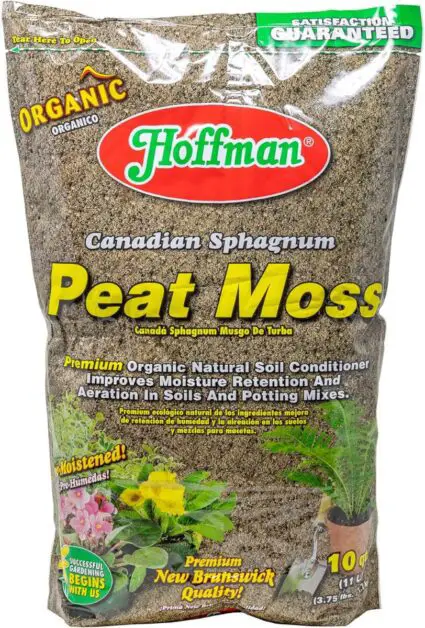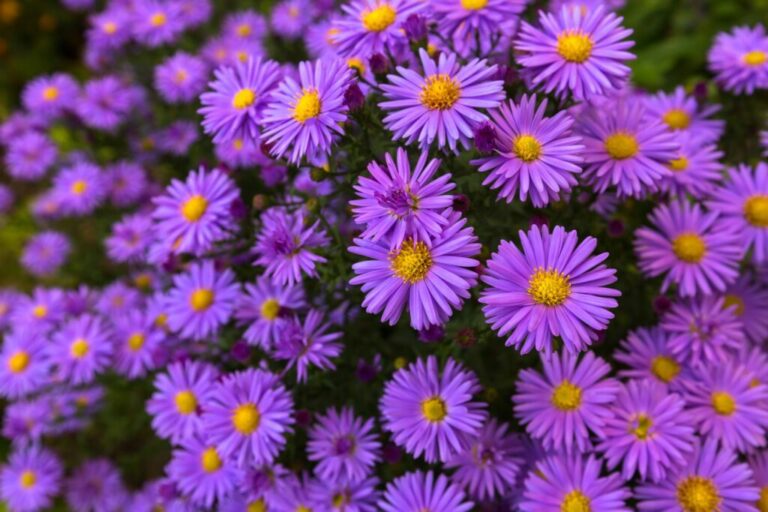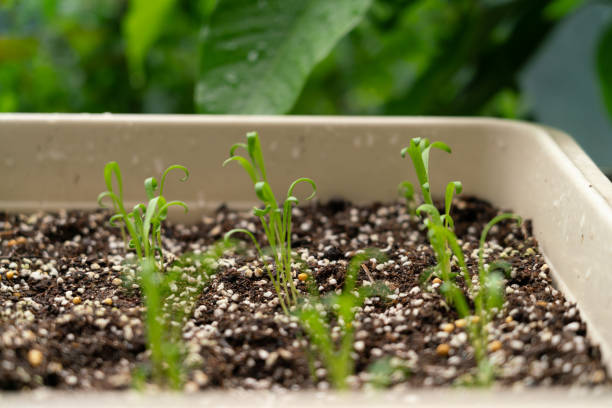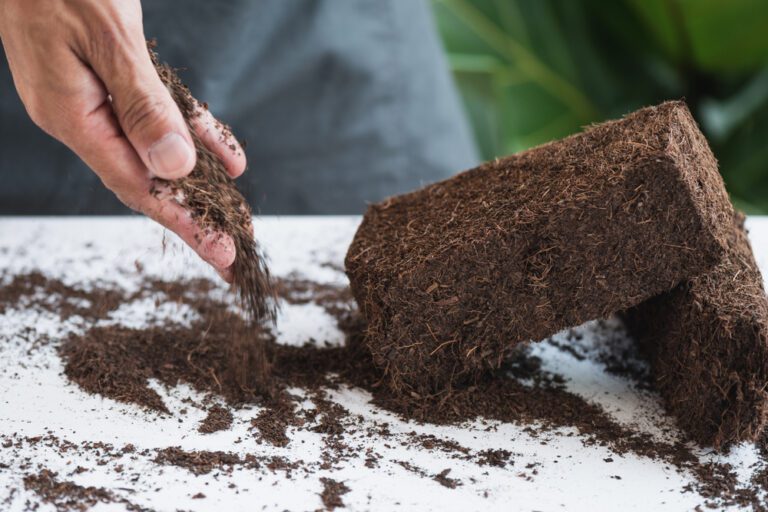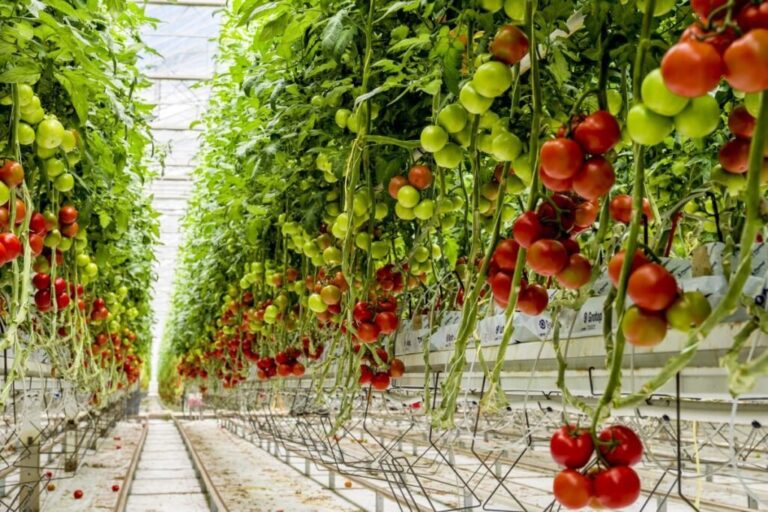Peat Moss for Plants: Benefits and Drawbacks Explained
Looking to give your plants a boost? Ever wondered about the magic of peat moss? From lush gardens to indoor houseplants, peat moss has long been a go-to for plant enthusiasts. But what exactly makes it so special? In this comprehensive guide, we’ll delve into the benefits and drawbacks of using peat moss for your plants. Dive in to discover how this natural wonder can enhance soil structure, retain moisture, and promote healthy root growth. But beware, not all that glitters is gold! We’ll also uncover the potential drawbacks and environmental concerns associated with peat moss. Whether you’re a seasoned gardener or just starting out, this guide will equip you with the knowledge you need to make informed decisions about your plant care routine. Let’s dig in and uncover the truth about peat moss!
Table of Contents
Understanding Peat Moss: A Brief Overview
Peat moss, also known as sphagnum moss, is a unique organic material renowned for its remarkable properties and wide-ranging applications in horticulture.
Derived from decomposed sphagnum moss, peat moss consists of partially decomposed plant material that has accumulated in waterlogged, acidic environments over thousands of years. Its excellent water-holding capacity, pH-modifying abilities, and nutrient retention make it a highly sought-after amendment for improving soil structure and plant growth.
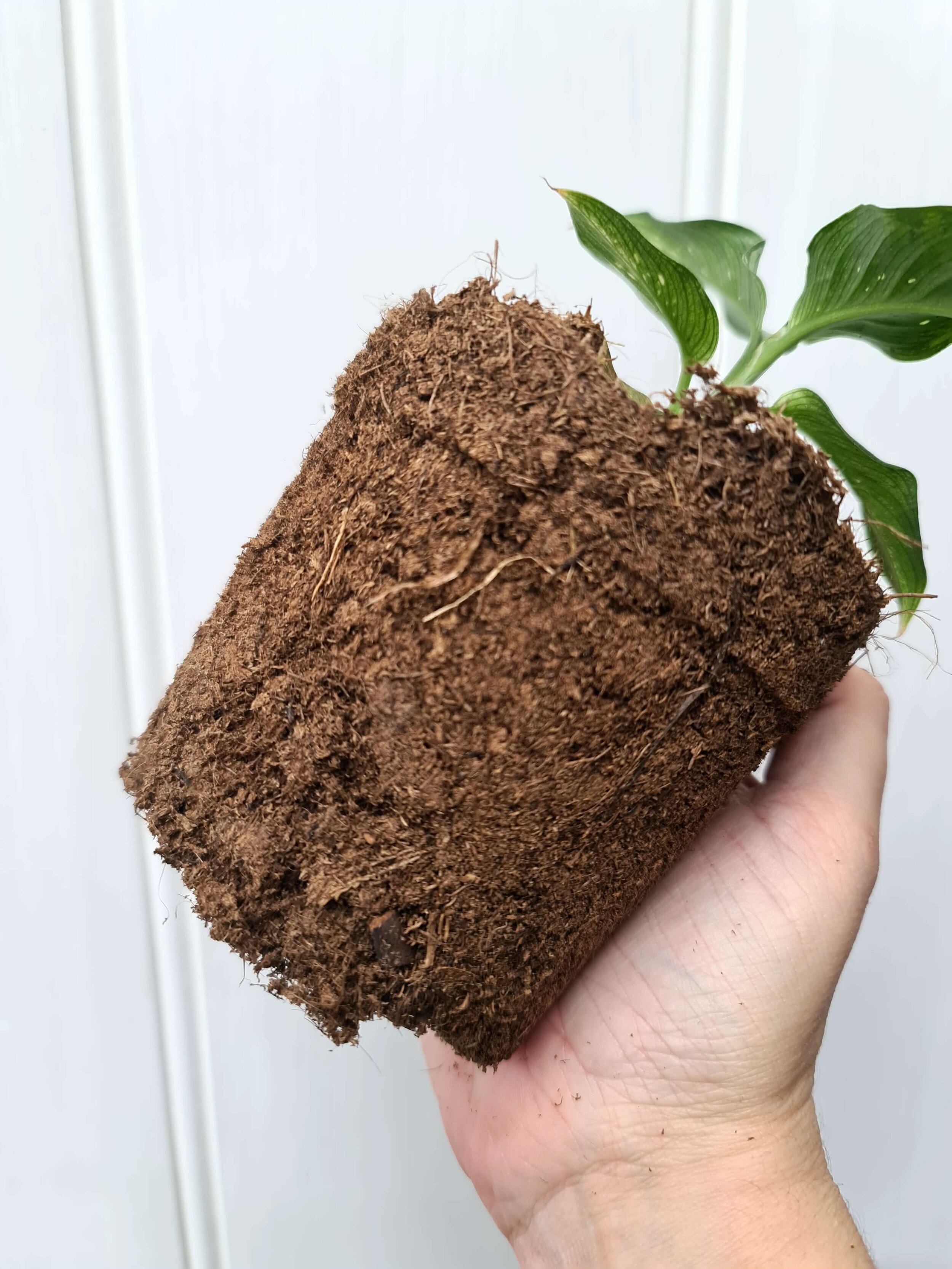
- Moisture Retention:
- Peat moss can absorb and hold up to 20 times its weight in water.
- Incorporating peat moss helps prevent water runoff and ensures a steady supply of moisture for plants.
- pH Modification:
- Peat moss has an acidic pH (ranging from 3.0 to 4.5).
- It’s ideal for correcting alkaline soil conditions, creating a better environment for acid-loving plants.
- Nutrient Retention:
- The fibrous structure of peat moss holds essential nutrients (nitrogen, phosphorus, potassium, calcium, and magnesium).
- Nutrients remain available to plants over time, reducing leaching.
- Air Porosity:
- Peat moss provides excellent air pockets due to its unique cell structure.
- Healthy root development and improved nutrient uptake result from better oxygen access.
In conclusion, peat moss is a versatile organic material that offers numerous benefits for horticulture. Its ability to retain moisture, modify pH levels, retain essential nutrients, and provide air porosity makes it an invaluable amendment for improving soil structure and promoting optimal plant growth. Whether used in gardening or landscaping projects, incorporating peat moss can significantly enhance the health and productivity of plants while conserving water resources.
The Composition of Peat Moss: What Makes It Unique
Peat moss is a unique natural material that offers numerous benefits to gardeners and horticulturists. Its composition plays a significant role in these benefits. Composed primarily of decomposed plant matter, peat moss is rich in organic materials such as sphagnum moss and other vegetation. This composition contributes to its unique characteristics, including its remarkable ability to hold and release water, its pH-modifying properties, and its capacity to improve soil structure.
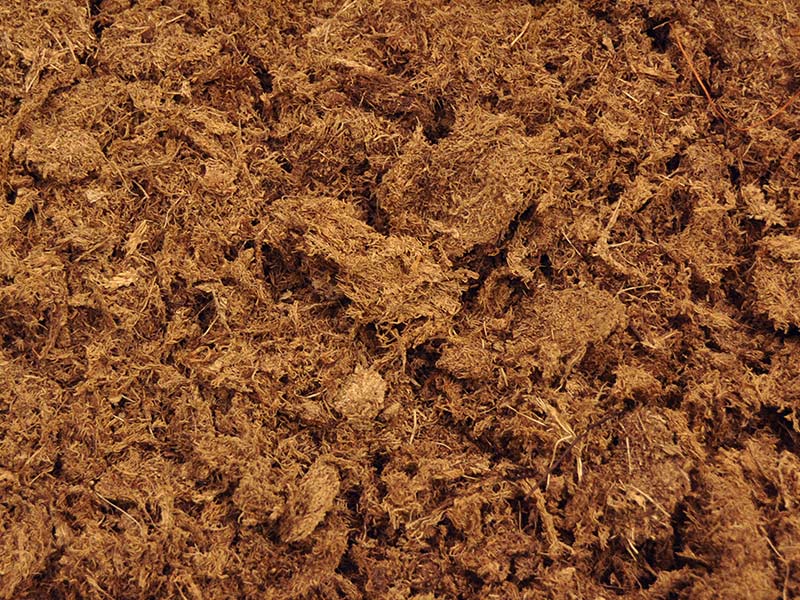
- Sphagnum Moss Content: Peat moss contains sphagnum moss, known for its exceptional water-holding capacity, absorbing and retaining up to 20 times its weight in water.
- Water Retention: The unique cell structures of sphagnum moss enhance moisture levels in soil, preventing it from drying out too quickly.
- Formation of Humic and Fulvic Acids: Decomposition of organic matter in peat moss results inhumic and fulvic acids, further promoting water retention and soil health.
- pH Modification: Organic matter in peat moss acts as a natural pH modifier, releasing organic acids over time to counterbalance alkaline soil properties and create a more acidic environment.
- Beneficial for Acid-Loving Plants: Peat moss’s pH-modifying characteristic is advantageous for plants like azaleas, blueberries, and rhododendrons, which thrive in acidic conditions, promoting optimal growth and nutrient uptake.
By promoting an optimal pH level, peat moss can create a favorable environment for plant growth and nutrient uptake.
“Hoffman Canadian Sphagnum Peat Moss has been a game-changer in my gardening endeavors. Its lightweight texture and excellent moisture retention have significantly improved the quality of my soil, ensuring optimal conditions for plant growth. I’ve noticed a remarkable difference in the health and vigor of my plants since incorporating this peat moss into my garden beds and potting mixes.
However, I must note that while peat moss enhances soil structure and moisture retention, it’s essential to be mindful of its environmental impact. Peat bogs, the source of peat moss, are fragile ecosystems that play a crucial role in carbon sequestration. Therefore, I make sure to use peat moss sparingly and consider alternative soil amendments where possible. Overall, Hoffman Canadian Sphagnum Peat Moss has proven to be a valuable asset in my gardening toolkit, striking a balance between soil improvement and environmental responsibility.”
✅ Nutrient Retention: This peat moss retains moisture and essential nutrients, providing a conducive environment for plant growth and reducing the frequency of watering.
✅ pH Adjustment: With its slightly acidic nature, Canadian sphagnum peat moss helps balance soil pH levels, creating optimal conditions for a wide range of plants.
✅ Weed Prevention: When used as a mulch or soil amendment, peat moss can help suppress weed growth, minimizing competition for nutrients and space.
✅ Versatile Application: From seed starting mixes to garden beds and containers, Hoffman peat moss is versatile and suitable for various gardening projects.
❌ Soil Compaction: Over time, peat moss may compact, reducing its ability to maintain optimal soil structure and drainage, especially in heavy clay soils.
❌ Limited Nutrient Content: While peat moss improves soil physical properties, it has minimal nutrient content, requiring supplementation with fertilizers for optimal plant growth.
❌ Acidity Levels: The acidic nature of peat moss may not be suitable for all plants, particularly those that prefer neutral or alkaline soil conditions.
❌ Cost: Canadian sphagnum peat moss can be more expensive compared to other soil amendments, potentially increasing the overall cost of gardening projects.
Improving Soil Structure with Peat Moss
Peat moss, also known as sphagnum moss, is an excellent amendment for improving soil structure in gardening and agricultural practices. Its unique composition and properties make it a valuable addition to various soil types, enhancing their overall quality and fertility.

- Improved Soil Aeration and Drainage:
- Peat moss’s high porosity allows better air circulation within the soil.
- Prevents soil compaction and waterlogging, especially beneficial for heavy clay soils.
- Enhanced Water-Holding Capacity:
- The fibrous structure of peat moss retains moisture.
- Slowly releases water to plant roots as needed, reducing water runoff and evaporation.
- Ideal for Water-Scarce Regions:
- Particularly advantageous in low-rainfall areas or during dry seasons.
- Helps conserve water by maintaining a steady supply to plants.
- Natural Soil Amendment:
- Incorporating peat moss improves soil structure.
- Creates an environment for healthy root development and nutrient access.
Whether used in container gardening or larger-scale agricultural practices, peat moss is a valuable tool for cultivating healthy and thriving plants.
Enhancing Water Retention with Peat Moss
Peat moss is widely recognized for its ability to enhance water retention in soil, making it an invaluable tool for gardeners looking to optimize their irrigation practices.
- High Porosity: Peat moss boasts a structure with numerous small, interconnected pores, enhancing its water retention capabilities by holding water and preventing excessive drainage.
- Water-Holding Capacity: Beyond its porosity, peat moss exhibits a remarkable ability to retain water within its cell walls, crucial for providing consistent moisture to plants, particularly in dry periods or regions with limited water access.
- Gradual Water Release: As peat moss absorbs water, it gradually releases it to plant roots, ensuring efficient utilization and minimizing the risk of water stress.
- Ideal for Sandy Soils: Peat moss is an excellent addition to sandy or well-draining soils, countering their low water-holding capacity and promoting healthy plant growth by retaining moisture in the root zone.
- Promotes Garden Success: By enhancing moisture retention and supporting healthy plant growth, peat moss contributes to increased yield and overall garden success.
By retaining moisture in the root zone, peat moss promotes healthy plant growth and can contribute to increased yield and overall garden success.
Peat Moss as a Natural pH Modifier
Peat moss has long been recognized for its ability to naturally modify soil pH levels, making it an invaluable tool for gardeners and farmers alike. With its unique composition, peat moss acts as a pH buffer, helping to adjust acidic or alkaline soils to a more neutral level.
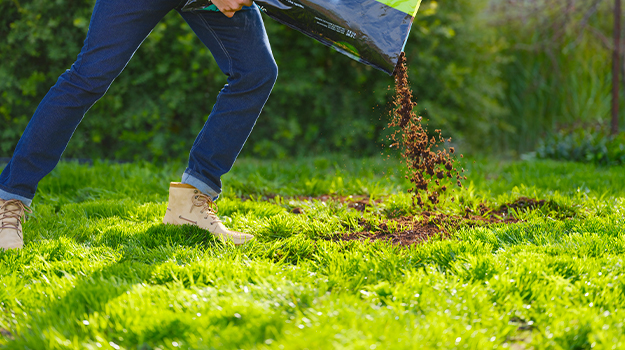
When added to alkaline soils, peat moss releases organic acids, lowering the pH.
For acidic soils, peat moss increases pH through the release of alkaline compounds.
Creates a more favorable environment for plants based on their pH preferences.
Peat moss is an organic amendment.
It poses no harm to plants, animals, or the ecosystem.
Moisture-retaining properties help stabilize soil moisture levels.
Acts as a buffer against pH fluctuations, providing consistency for root development.
Enhances overall soil health, nutrient uptake, and plant productivity.
Creates ideal growing conditions for healthy plants.
With its ability to improve both soil structure and nutrient availability, peat moss stands as an indispensable tool for gardeners seeking to create the ideal growing conditions for their plants.
Nutrient Retention and Release with Peat Moss
Peat moss is well-known for its ability to retain and release nutrients, making it a valuable addition to gardening practices.
- When incorporated into the soil, peat moss acts as a sponge, absorbing and holding onto essential nutrients like nitrogen, potassium, and phosphorous.
- This helps prevent nutrient runoff and leaching, ensuring that plants have a steady supply of these vital elements for healthy growth.
- Furthermore, peat moss slowly releases these nutrients over time, providing a steady and consistent source of nourishment for plants.
- This gradual nutrient release not only reduces the risk of nutrient imbalances or deficiencies but also promotes optimal plant uptake and utilization.
- As a result, plants grown with the help of peat moss exhibit improved overall health and vigor.
- Whether you’re cultivating fruits, vegetables, flowers, or ornamental plants, incorporating peat moss into your soil can enhance nutrient availability and support robust growth.
The Role of Peat Moss in Aeration and Drainage
Peat moss plays a vital role in promoting aeration and drainage in gardening and horticultural practices. Its unique structure, composed of partially decomposed organic matter, allows for the efficient movement of air and water within the soil.
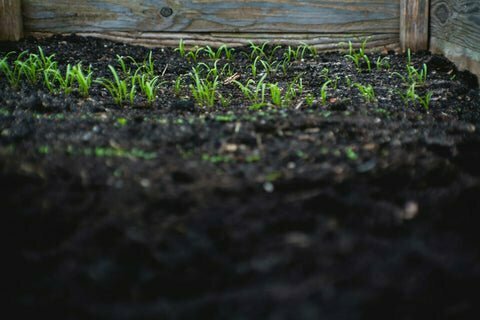
- Soil Conditioning: When added to compacted or heavy soils, peat moss acts as a soil conditioner, loosening soil particles and creating air pockets for better aeration.
- Essential Aeration: Improved aeration facilitated by peat moss is crucial for root development and overall plant health, ensuring access to oxygen for respiration and nutrient uptake.
- Prevention of Harmful Gases: Adequate air circulation in soil, facilitated by peat moss, helps prevent the buildup of harmful gases like carbon dioxide, which can negatively impact root function.
- Enhanced Drainage: Peat moss aids in drainage by retaining moisture while allowing excess water to drain away, particularly beneficial in heavy clay soils prone to waterlogging.
- Prevention of Anaerobic Conditions: By improving drainage and preventing waterlogging, peat moss helps prevent the development of anaerobic conditions and root rot, promoting healthier plants and improved growing conditions.
By improving drainage, peat moss helps prevent the development of anaerobic conditions and root rot, ensuring healthier plants and improved overall growing conditions.
Using Peat Moss for Seed Starting and Transplanting
With its unique composition and beneficial properties, peat moss is a versatile and valuable resource for gardeners, especially when it comes to seed starting and transplanting. The fine texture and high porosity of peat moss make it an ideal medium for germinating seeds and providing the necessary conditions for healthy root development.

- Moisture Retention: Peat moss offers excellent moisture retention during seed starting, preventing delicate young roots from drying out while imbiding necessary moisture for germination without risking waterlogging and rot.
- Stable Environment: Peat moss provides a stable and consistent environment for seedlings, promoting even growth and reducing the risk of transplant shock.
- Smooth Transplanting: During transplanting, peat moss helps ensure a smooth transition for young plants by retaining moisture, preventing root dryness, minimizing stress, and increasing successful establishment chances.
- Aeration and Drainage: Peat moss promotes aeration and drainage in the root zone, creating a healthy growing environment that encourages strong root development and overall plant vigor.
- Invaluable Tool: With its moisture-retaining, stability-promoting, and root-aiding properties, peat moss proves to be an invaluable tool for gardeners seeking to give their seeds and transplants the best possible start.
Peat Moss and its Contribution to Root Development
Peat moss has long been recognized for its significant contribution to root development in plants. It boasts a unique combination of properties that create an ideal environment for healthy root growth.
- Excellent Air Circulation: Peat moss’s high porosity allows for exceptional air circulation in the soil, facilitating the exchange of gases like oxygen and carbon dioxide crucial for root respiration. This promotes the formation of robust and extensive root systems.
- Exceptional Water-Holding Capacity: With its exceptional water-holding capacity, peat moss ensures roots have consistent access to moisture, preventing both underwatering and overwatering, which can harm root health. This steady hydration source ensures roots receive necessary nutrients and minerals dissolved in the soil solution.
- Drought Resistance: Peat moss’s water-retaining properties also buffer against drought conditions, helping plants endure and recover from dry spells more effectively.
- Release of Plant-Beneficial Compounds: Decomposed organic matter in peat moss releases plant-beneficial compounds like auxins and cytokinins, stimulating cell division, elongation, and differentiation, promoting robust root growth.
- Slightly Acidic pH: Peat moss’s slightly acidic pH aids in ion availability and nutrient uptake, further supporting root development.
In summary, the impressive qualities of peat moss, including its porosity, water-holding capacity, and nutrient-releasing properties, contribute significantly to enhanced root development. Incorporating peat moss into soil mixes or using it as a top dressing can provide plants with the optimal conditions necessary to establish and expand their root systems, ultimately leading to healthier and more productive plants.
Exploring the Environmental Impact of Peat Moss Harvesting
Peat moss harvesting has gained attention due to its potential environmental impact. Peatlands, where peat moss is sourced, are unique ecosystems that act as carbon sinks and provide habitat for diverse plant and animal species. However, the extraction of peat for commercial use can disrupt these delicate ecosystems and lead to irreversible damage.
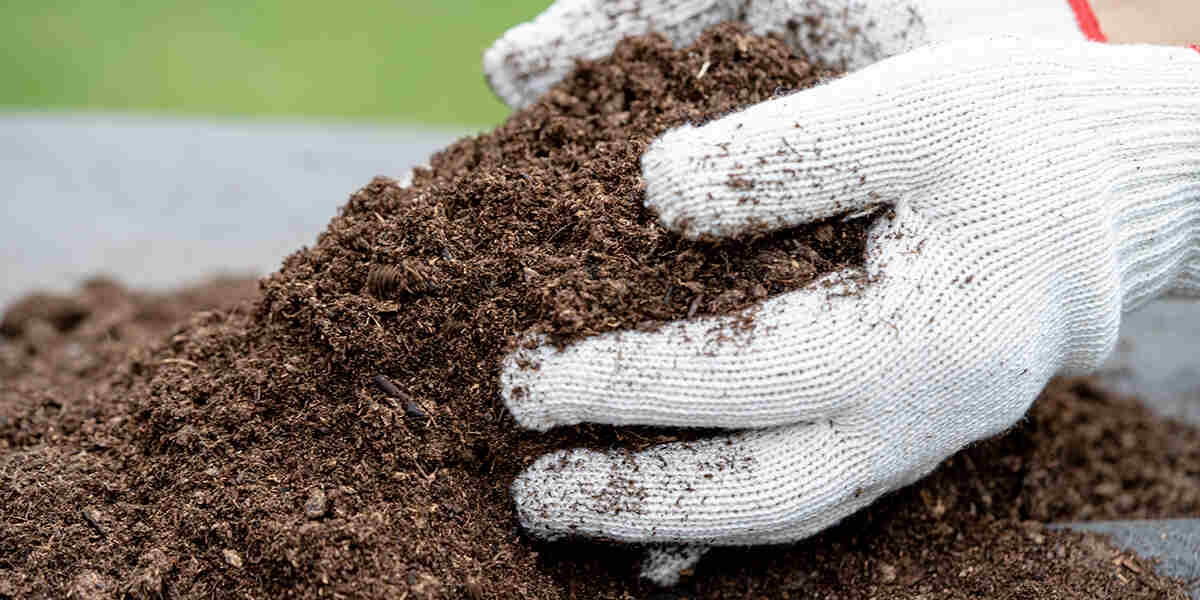
- Carbon Emissions:
- Peatlands store significant carbon.
- Harvesting peat accelerates decomposition, releasing stored carbon dioxide (CO2) into the atmosphere.
- Contributes to climate change and global warming.
- Water Regulation and Filtration:
- Peatlands act as natural sponges, absorbing rainfall and slowly releasing water.
- Disrupting peat moss harvesting affects hydrological balance, leading to drainage issues and water loss.
- Impacts wetlands, rivers, and water availability.
- Biodiversity Impact:
- Peatlands host unique plant and animal species adapted to specific conditions.
- Removing peat disrupts habitats, leading to loss of flora and fauna.
- Drainage and drying harm surrounding ecosystems.
- Sustainable Alternatives:
- Consider eco-friendly alternatives like organic compost or coconut coir.
- Make informed choices to preserve natural ecosystems and reduce ecological footprint.
Let’s continue to prioritize sustainable practices for a healthier planet! 🌿🌎
Alternatives to Peat Moss: A Sustainable Approach
Peat moss has long been a popular amendment in gardening and horticulture due to its ability to improve soil structure, enhance water retention, and modify pH levels. However, concerns about the environmental impact of peat moss harvesting have led many gardeners to seek sustainable alternatives. Luckily, there are several eco-friendly options that can provide similar benefits without depleting valuable peatland resources.
coconut coir
One alternative worth considering is coconut coir, which is derived from the husks of coconuts. Coconut coir not only improves soil structure and water retention but also has the added advantage of being a renewable resource. It is readily available and can be used as a substitute for peat moss in potting mixes, seed starting, and hydroponic systems.
compost
Another sustainable option is compost, which not only enriches the soil with organic matter but also helps retain moisture and improve nutrient availability. Additionally, compost promotes beneficial microbial activity, which contributes to healthy plant growth.
leaf mold
In addition to coconut coir and compost, another alternative to peat moss is leaf mold. Leaf mold is created by decomposing leaves over time, resulting in a dark, crumbly substance that can improve soil structure and retain moisture. It is a natural process that occurs in forests but can also be replicated in home gardens by creating leaf piles or using specialized bins. Using leaf mold as an amendment not only reduces waste but also provides a sustainable option for enhancing garden soils.
Biochar
One more eco-friendly option worth considering is biochar. Biochar is produced through the carbonization of biomass materials such as wood chips or agricultural waste. This process creates a stable form of carbon that can improve soil fertility, increase water-holding capacity, and enhance nutrient retention. Additionally, biochar has been found to sequester carbon dioxide from the atmosphere when applied to soils long-term.
green manure
Lastly, green manure cover crops offer another sustainable approach to replacing peat moss. These cover crops are grown specifically for their ability to add organic matter back into the soil when they are tilled under before reaching maturity. Examples of green manure cover crops include legumes like clover or vetch which fix nitrogen into the soil while improving its structure.
Alternatives to Peat Moss: A Sustainable Approach
| Alternative Material | Description |
|---|---|
| 1. Coconut Coir | – Sustainable: Made from coconut husks, a byproduct of the coconut industry. |
| – Excellent Water Retention: Retains water well and provides aeration. | |
| – Neutral pH: pH is close to neutral, suitable for various plants. | |
| 2. Compost | – Organic Matter: Rich in nutrients, improves soil structure, and supports microbial activity. |
| – DIY Option: Can be produced at home by composting kitchen and garden waste. | |
| – Recycles Organic Material: Reduces waste and promotes sustainability. | |
| 3. Rice Husk | – Waste Product: Utilizes agricultural waste from rice processing. |
| – Good Aeration: Provides aeration to the soil and promotes root development. | |
| – Biodegradable: Naturally breaks down over time without harming the environment. | |
| 4. Pine Bark | – Byproduct: Harvested from the lumber industry, utilizing a waste product. |
| – Aeration: Improves soil aeration and drainage. | |
| – Acidic pH: Suitable for acid-loving plants. | |
| 5. Wood Fiber | – Recycled Material: Made from recycled wood products. |
| – Moisture Retention: Retains moisture while providing good aeration. | |
| – Biodegradable: Decomposes naturally, reducing environmental impact. | |
| 6. Hemp Coir | – Sustainable Source: Derived from the fibrous husks of hemp plants. |
| – pH Neutral: Suitable for a wide range of plants. | |
| – Renewable Resource: Hemp is a fast-growing and renewable crop. | |
| 7. Sphagnum Moss | – Harvested Sustainably: Harvested in a sustainable manner, allowing for natural regeneration. |
| – Excellent Moisture Retention: Provides good water retention properties. | |
| – Acidic pH: Suitable for acid-loving plants. |
By exploring these alternatives to peat moss such as coconut coir, composting methods like leaf mold creation or using green manure cover crops along with biochar application; gardeners can make environmentally conscious choices without compromising on the benefits provided by traditional amendments.
“Char Bliss Biochar has revolutionized my gardening experience. Its ability to enrich soil and promote plant growth is truly remarkable. Since incorporating it into my garden beds, I’ve witnessed healthier, more vigorous plants with increased yields.
However, I found that proper application can be a bit tricky, requiring thorough mixing into the soil to ensure even distribution. Despite this minor challenge, the long-lasting benefits of Char Bliss Biochar make it well worth the effort. Overall, I highly recommend Char Bliss Biochar to any gardener looking to unlock the full potential of their plants and soil.”
- Soil Enrichment: Char Bliss Biochar serves as a powerful soil amendment, enriching soil with essential nutrients and enhancing its overall structure.
- Nutrient Retention: This biochar effectively retains moisture and nutrients in the soil, reducing the need for frequent watering and fertilizer applications.
- Microbial Activity: Biochar stimulates beneficial microbial activity in the soil, promoting nutrient cycling and improving plant health.
- Carbon Sequestration: By incorporating biochar into the soil, carbon is effectively sequestered, contributing to climate change mitigation efforts.
- Long-lasting Benefits: Char Bliss Biochar has long-lasting effects, improving soil fertility and plant growth over time with minimal maintenance.
- Initial Cost: The upfront cost of purchasing biochar may be higher compared to traditional soil amendments, potentially increasing the overall expense of gardening projects.
- Application Challenges: Proper application of biochar requires careful mixing into the soil, as it can be difficult to distribute evenly, especially in large garden areas.
- pH Adjustment: Biochar may initially raise the pH of acidic soils, requiring additional amendments to maintain optimal soil pH levels for certain plants.
- Carbon Footprint: While biochar helps sequester carbon in the soil, the production process may involve carbon emissions depending on the source of biomass used.
- Limited Research: Despite its potential benefits, the long-term effects of biochar on soil health and plant growth are still being studied, and further research is needed to fully understand its impact.
Factors to Consider Before Using Peat Moss in Gardening
1. Soil pH and Composition: Before using peat moss in your garden, it is essential to understand the current pH level and composition of your soil. Peat moss is acidic in nature, so if your soil already has a low pH, it may not be suitable for plants that prefer neutral or alkaline conditions. Conducting a soil test will help you determine the pH level and whether it requires amendments to balance the acidity.
2. Environmental Impact: Peat moss harvesting has raised concerns regarding its environmental impact. The extraction of peat moss from natural ecosystems can contribute to land degradation, loss of biodiversity, and carbon dioxide emissions. As a responsible gardener, consider alternatives to peat moss that are more sustainable and environmentally friendly, such as coconut coir or compost. By choosing eco-friendly products, you can ensure a greener gardening practice.
Remember, understanding your soil’s needs and considering the environmental consequences are crucial factors to weigh before using peat moss in your gardening endeavors. Taking these elements into account will help you make informed decisions that align with both the health of your plants and the preservation of our planet’s resources.
Factors to Consider Before Using Peat Moss in Gardening
• Soil pH and Composition: Before using peat moss in your garden, it is essential to understand the current pH level and composition of your soil.
– Conduct a soil test to determine the pH level.
– Determine if your plants prefer neutral or alkaline conditions.
• Environmental Impact: Peat moss harvesting has raised concerns regarding its environmental impact.
– Extraction of peat moss can contribute to land degradation.
– Loss of biodiversity may occur due to peat moss extraction.
– Carbon dioxide emissions are released during the extraction process.
• Consider Alternatives:
– Coconut coir is a sustainable alternative to peat moss that can be used as a soil amendment.
– Compost is another eco-friendly option that provides nutrients for plants while improving soil structure.
By considering factors such as soil pH, composition, and the environmental impact of using peat moss, you can make informed decisions that align with both plant health and sustainability.
How to Properly Prepare and Apply Peat Moss to Plants
Preparing and applying peat moss to plants is a simple yet crucial step in achieving optimal growth and health. Before using peat moss, it is important to thoroughly moisten it to enhance its ability to absorb and retain water.
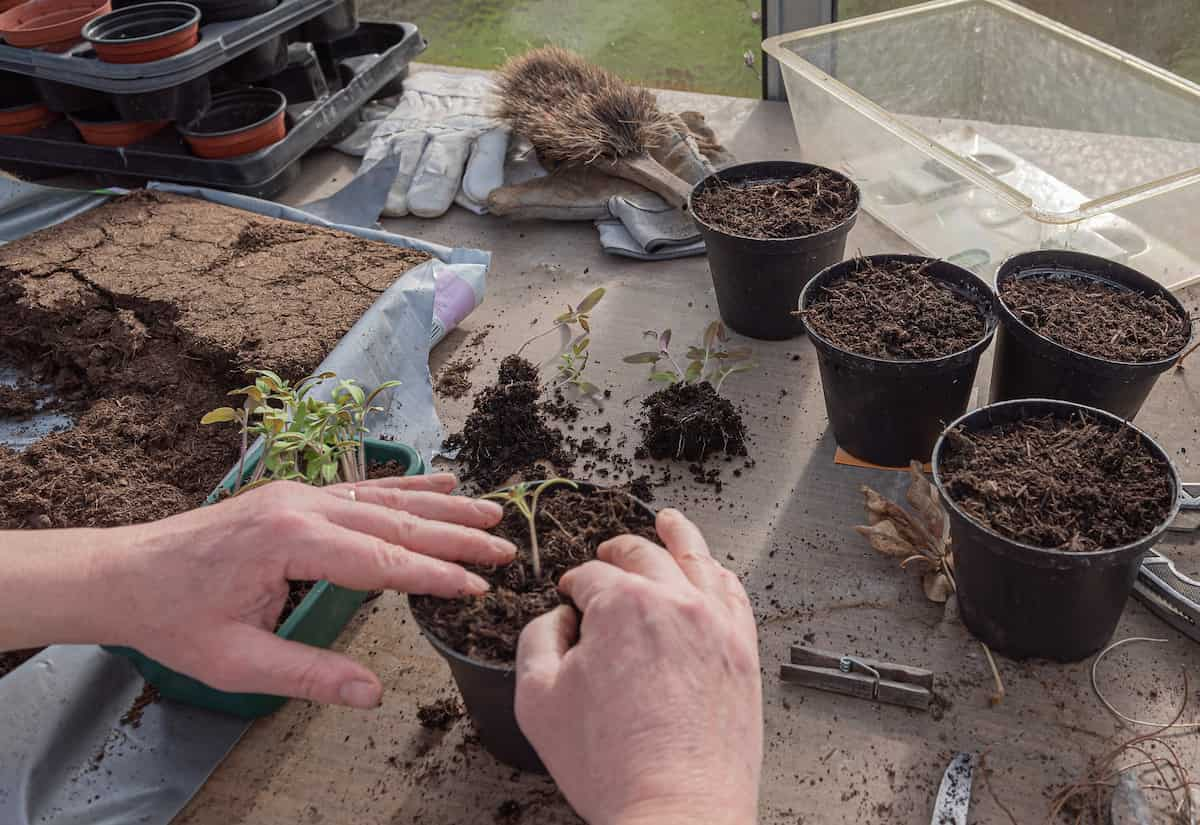
Fill a container (e.g., wheelbarrow or bucket) with the desired amount of peat moss.
Gradually add water while stirring until the peat moss is evenly moistened (damp but not dripping).
Combine the moistened peat moss with other growing media (e.g., perlite, vermiculite) in an appropriate ratio.
Improves soil structure and enhances water retention for healthy root development.
Loosen the soil where you plan to plant.
Spread a layer of moistened peat moss on top.
Gently work it into the soil using a garden fork or tiller.
Ensures improved soil quality, structure, drainage, and nutrient availability.
By following these steps, you can effectively prepare and apply peat moss to your plants, promoting their optimal growth and health.
Common Misconceptions about Peat Moss and Clarifications
Misconception 1: Peat moss is harmful to the environment.
One common misconception about peat moss is that its harvesting and use are detrimental to the environment. While it is true that the extraction of peat moss can have environmental impacts, proper management and sustainable harvesting practices can significantly mitigate these effects.
Furthermore, the benefits provided by peat moss in gardening and horticulture can outweigh its potential negative impacts when used responsibly. It is essential to seek out peat moss that is harvested from sustainably managed peatlands and support companies that actively work towards conservation efforts.
Misconception 2: Peat moss is not a renewable resource.
Another misconception surrounding peat moss is that it is not a renewable resource. Peat moss is formed over time through the decomposition of organic matter in wetland environments. While the process can take centuries, the formation of peat moss is ongoing, making it a renewable resource on a geological timescale.
However, it is crucial to consider the rate at which peat moss accumulates and the speed at which it is harvested. Sustainable peatland management practices, such as controlled extraction, restoration of harvested areas, and the promotion of alternative growing media, can ensure the long-term availability of peat moss while minimizing its impact on ecosystems.
Combining Peat Moss with Other Amendments for Maximum Benefits
Combining peat moss with other amendments can significantly enhance the benefits for your plants and maximize their growth potential. By understanding the specific needs of your plants and the properties of different amendments, you can create a well-balanced soil mix that promotes healthy root development, improved water retention, and nutrient availability.

- Consider Drainage Capacity: When combining peat moss with other amendments, assess the soil’s drainage capacity, as peat moss’s water retention abilities can hinder drainage if used excessively.
- Incorporate Perlite or Vermiculite: Address drainage issues by incorporating amendments like perlite or vermiculite into the mix. These materials improve aeration and water drainage, ensuring roots access oxygen and preventing waterlogged conditions.
- Add Compost or Organic Matter: Enhance soil nutrition by adding compost or organic matter. Compost enriches the soil with organic matter, fostering beneficial microorganism growth that aids in nutrient availability.
- Create a Balanced Mix: Blend peat moss with compost to create a balanced mix that supports both water retention and nutrient-rich conditions, promoting optimal plant growth and health.
Remember, the key to successfully combining peat moss with other amendments is finding the right balance. Each plant species may have specific needs, so research and experimentation are necessary to determine the optimal ratio of peat moss to other amendments for maximum benefits.
Real-Life Examples and Success Stories of Peat Moss Usage
Peat moss has been successfully used in various gardening and agricultural applications, providing numerous success stories for gardening enthusiasts. For example, many gardeners have found that incorporating peat moss into their soil mixtures has led to healthier and more productive plants.
- Testimonial from Jane Smith: Gardener Jane Smith shares her positive experience using peat moss in her vegetable garden, noting significant improvements in overall crop health and yield. She praises the looser soil structure and enriched environment that promotes plant thriving.
- Insight from Hydroponics Expert John Green: Hydroponics expert John Green highlights the benefits of peat moss in hydroponic systems, emphasizing its ability to retain moisture and provide ample root aeration. He observes faster growth rates and higher nutrient uptake in plants grown in peat moss-based setups, endorsing its effectiveness for optimal plant growth in hydroponics.
These real-life examples serve as a testament to the positive impact that peat moss can have on plant health and productivity in various gardening and agricultural settings.
Expert Tips for Using Peat Moss in Different Planting Scenarios.
When it comes to using peat moss in different planting scenarios, there are a few expert tips that can help you maximize its benefits.
- Mix with Organic Amendments: Peat moss works best when mixed with other organic amendments like compost or vermiculite, improving soil structure, moisture retention, and promoting better aeration and drainage.
- Moisten Thoroughly: Before incorporating peat moss into the soil, ensure it is thoroughly moistened. This facilitates even distribution throughout the planting area and integration with the soil.
- Recommended Application: For seed starting or transplanting, incorporate around 25-50% peat moss into the potting mix. This creates a balanced growing medium that supports root development while retaining essential moisture.
- Monitor pH Levels: Peat moss is acidic but also acts as a pH buffer. Regularly monitor and adjust soil pH levels to ensure optimal conditions for plant growth, benefiting from peat moss’s pH-balancing properties.
By following these expert tips, you can harness the full potential of peat moss in various planting scenarios. Whether you’re starting seeds, transplanting, or looking to improve your garden’s overall soil quality, peat moss can be a valuable tool to enhance moisture retention, promote better root development, and create an ideal growing environment for your plants.
Watch video for more information:
FAQ
Is peat moss safe to use around children and pets?
Yes, peat moss is generally considered safe to use around children and pets. However, it is always recommended to keep children and pets away from the area where peat moss has been applied until it has been thoroughly watered in and settled.
Can peat moss be used for indoor plants?
Yes, peat moss can be used for indoor plants. It is often used as a component in potting mixes for houseplants due to its ability to retain water and improve soil structure.
How often should peat moss be applied to plants?
The frequency of peat moss application depends on various factors, such as the specific plant’s needs, climate, and soil conditions. It is generally recommended to incorporate peat moss into the soil during initial planting and then supplement it as needed based on the plant’s requirements.
Can peat moss be used as a mulch?
While peat moss can technically be used as a mulch, it is not commonly recommended due to its high decomposition rate. Peat moss is better suited for mixing into the soil rather than being used as a surface mulch.
Is peat moss renewable?
Peat moss is considered a non-renewable resource as it takes thousands of years for peat to form. Harvesting peat moss can have negative environmental impacts, which is why exploring sustainable alternatives is encouraged.
Can peat moss be used in hydroponic systems?
Peat moss is not commonly used in hydroponic systems because it can break down and clog the system. Hydroponic growers typically opt for other inert growing media specifically designed for this method.
Can peat moss be used in container gardening?
Yes, peat moss is often used in container gardening due to its ability to retain moisture and provide good drainage. It is particularly beneficial for plants that require well-aerated and well-drained soil.
Can peat moss be mixed with sandy soil?
Yes, peat moss can be mixed with sandy soil to improve its water retention and nutrient-holding capacity. The addition of peat moss helps to create a more balanced and fertile growing environment.
Can peat moss be used in vegetable gardens?
Yes, peat moss can be used in vegetable gardens. It helps improve soil structure, retain moisture, and provide a favorable pH for many vegetable crops. However, it is important to consider the environmental impact of peat moss harvesting and explore sustainable alternatives.
Can peat moss be reused or recycled?
Peat moss can be reused or recycled to a certain extent. After use, it can be mixed back into the soil or composted. However, due to its decomposition properties, the effectiveness of reused peat moss may diminish over time.

Studied Agricultural Engineering-Plant Protection at University of California, Davis.
Head of Content writing team at Southelmontehydroponics.com


